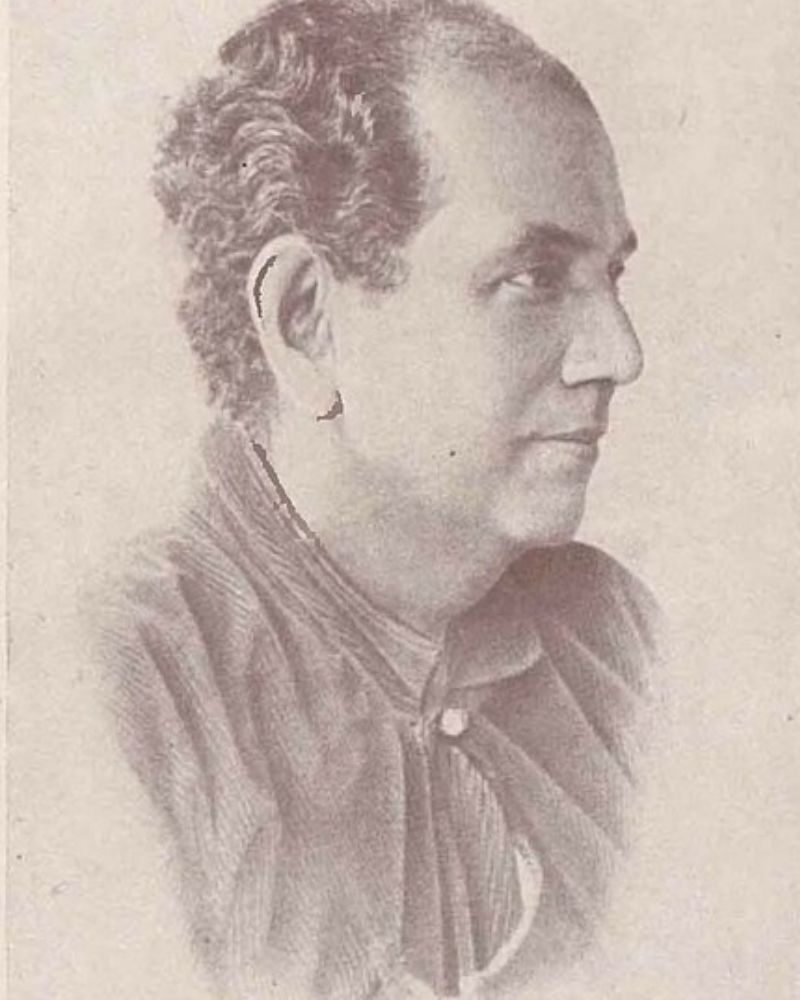Abanindranath Tagore: The Father of the Bengal School of Art

Abanindranath Tagore was a pioneering Indian artist and writer whose contributions significantly shaped the course of modern Indian art. As the founder of the Bengal School of Art, he sought to break away from Western artistic influences and revitalize traditional Indian art forms. His vision not only redefined Indian painting but also laid the foundation for a nationalist art movement that connected India’s rich cultural heritage with the spirit of independence and self-expression. His legacy continues to inspire artists and art lovers to this day, as his works remain an integral part of India’s cultural history.
Reviving Indian Traditions in Art
During Abanindranath Tagore’s time, Indian art was heavily influenced by European academic realism, with artists like Raja Ravi Varma popularizing Western techniques. However, Tagore rejected these foreign influences and sought to revive the indigenous styles of Indian art, particularly those from Mughal and Rajput miniature paintings, as well as the ancient Ajanta frescoes. He believed that Indian art should reflect the country’s unique identity and cultural legacy, untainted by colonial domination.
Tagore’s style was characterized by delicate lines, soft pastels, and an ethereal quality that distinguished it from the bold and realistic depictions common in Western art. He emphasized simplicity and harmony, using muted colors to convey mood and emotion. His works were often spiritual, serene, and filled with a sense of devotion to the subjects they portrayed. This approach was markedly different from the highly detailed and meticulously realistic paintings of the period. Instead of aiming for technical perfection, Abanindranath focused on capturing the essence of the subject, often imbuing his paintings with a sense of mysticism and introspection.
Spiritual and Nationalistic Themes
Abanindranath’s works were deeply rooted in Indian spirituality, mythology, and national identity. One of his most iconic paintings, Bharat Mata (Mother India), symbolized India as a mother figure who nurtures and protects her children. This image of India as a divine mother, holding symbols of learning, food, clothing, and spiritual knowledge, became an emblem of the nationalist movement. The painting resonated with the Swadeshi movement, inspiring Indians to embrace their cultural heritage and reject colonial influences. Bharat Mata became a powerful visual symbol of India’s struggle for independence, with its portrayal of a compassionate and protective mother guiding the nation toward freedom.
In addition to nationalistic themes, Abanindranath was also drawn to historical and mythological subjects. His painting The Passing of Shah Jahan portrayed the poignant moment when the Mughal Emperor Shah Jahan gazes upon the Taj Mahal, mourning the loss of his wife Mumtaz Mahal. This work, like many others, blended historical narratives with poetic imagination, highlighting Tagore’s ability to infuse his subjects with emotional depth. Similarly, in Krishna Lila, he depicted the playful and divine childhood of Lord Krishna, emphasizing his connection to the spiritual and mythical dimensions of Indian life.
Abanindranath’s exploration of national pride and spirituality was not merely about depicting the past. His art also sought to awaken a collective consciousness among the people of India, urging them to look inward and reconnect with their cultural roots. His works were, in many ways, a call to action, encouraging people to embrace their rich heritage and use it as a foundation for a future of independence and self-expression.
The Bengal School and Artistic Renaissance
Abanindranath Tagore’s influence extended beyond his own personal works. As a teacher and mentor, he inspired a generation of artists who carried forward his vision of reviving traditional Indian art. The Bengal School of Art, which Tagore founded, became a vibrant hub for artistic innovation and a symbol of cultural resurgence. It was a counter-movement to the Westernized academic art training prevalent in British India, as it emphasized indigenous artistic techniques and a renewed appreciation for Indian traditions.
Under Tagore’s guidance, artists such as Nandalal Bose, Asit Kumar Haldar, and Kshitindranath Mazumdar were nurtured, and their works came to define the Bengal School’s ideals of simplicity, spirituality, and national pride. Tagore’s teaching and leadership extended beyond the studio, as he also played a pivotal role in founding institutions like the Indian Society of Oriental Art. This organization encouraged the study and practice of traditional Indian art forms, and it helped foster a cultural renaissance in India at a time when British colonialism had overshadowed much of the country’s indigenous traditions.
The Bengal School became a beacon of resistance to the cultural domination of the British, as it embodied a vision of India as an independent, culturally rich nation. Tagore’s efforts to preserve and celebrate Indian heritage through art contributed to the broader nationalistic movements that would eventually lead to India’s independence.
Legacy and Influence
Abanindranath Tagore’s artistic philosophy laid the groundwork for modern Indian art, particularly through his emphasis on self-expression rooted in indigenous traditions. His work was deeply influential not only in the realm of visual arts but also in literature. His illustrated stories, such as Buro Angla (The Old Man), remain beloved in Bengali literature for their narrative richness and artistic quality. Tagore’s combination of art and storytelling helped to elevate the visual arts in India and connect them to the broader cultural and literary traditions of the country.
Today, Abanindranath’s legacy lives on through the continued appreciation of the Bengal School’s artistic ideals. His works are displayed in numerous museums and galleries, and his influence is evident in the works of many contemporary Indian artists. Tagore’s ability to revive and redefine Indian art not only helped preserve India’s rich artistic heritage but also ensured that it would continue to flourish in the modern era. His art was a means of self-expression, a reflection of India’s cultural identity, and a powerful tool for resistance and renewal. Through his visionary leadership and innovative approach, Abanindranath Tagore played a crucial role in shaping the future of Indian art, ensuring that India’s artistic heritage would remain relevant, vibrant, and influential for generations to come.